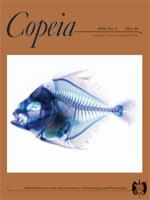The effect of natural selection acting upon correlated traits can alter mating success and relative fitness dramatically. Eastern Mosquitofish (Gambusia holbrooki) harbor a genetic body-pigmentation polymorphism where pigmentation color is associated with particular correlated traits. About ninety-nine percent of all males are silver and about one percent are melanic (or black spotted). Here we demonstrate that these pigmentation morphs also differ in correlated life-history traits that affect fitness. Melanic males are larger than silver males in nature, and larger than silver siblings in a controlled environment. Melanic males have relatively larger gonopodia (mating organ) than silver males and greater survival during conspecific competition. This is indicative of a genetic correlation between body color, body size, growth rate, and relative gonopodium size (after controlling for body size). Our past work demonstrates that melanic males also have much higher survival with predators. Thus, while a relatively larger gonopodium is said to result in a cost with respect to predation in two Gambusia species, in G. holbrooki the fitness effects of correlated traits appear to far outweigh this cost for melanic males.
How to translate text using browser tools
20 May 2010
Color, Body Size, and Genitalia Size Are Correlated Traits in Eastern Mosquitofish (Gambusia holbrooki)
Lisa Horth,
Christopher Binckley,
Rebecca Wilk,
Pranav Reddy,
Abhinav Reddy
ACCESS THE FULL ARTICLE





